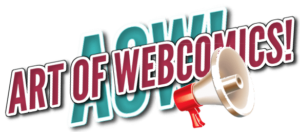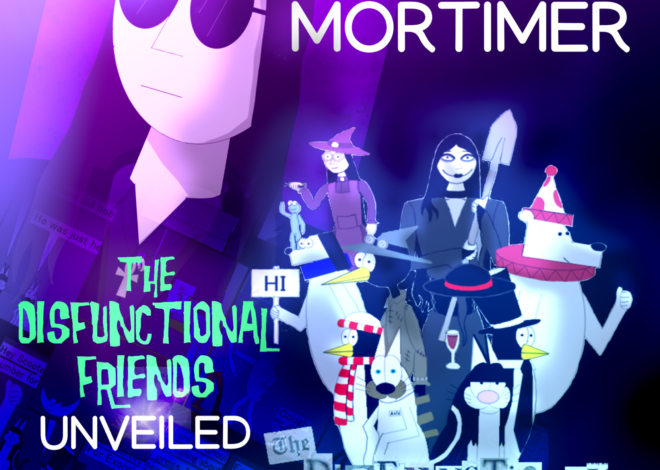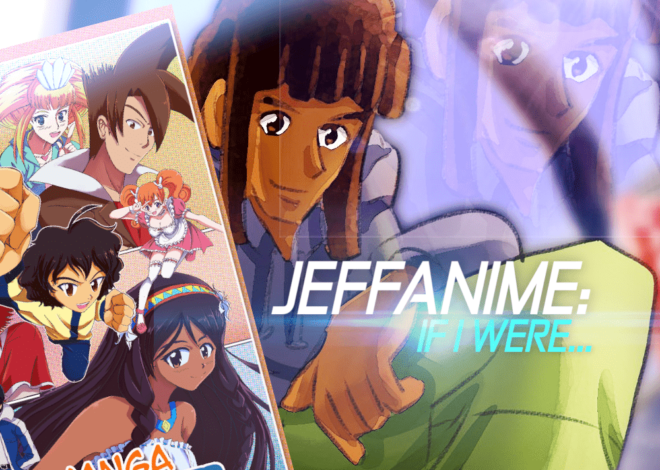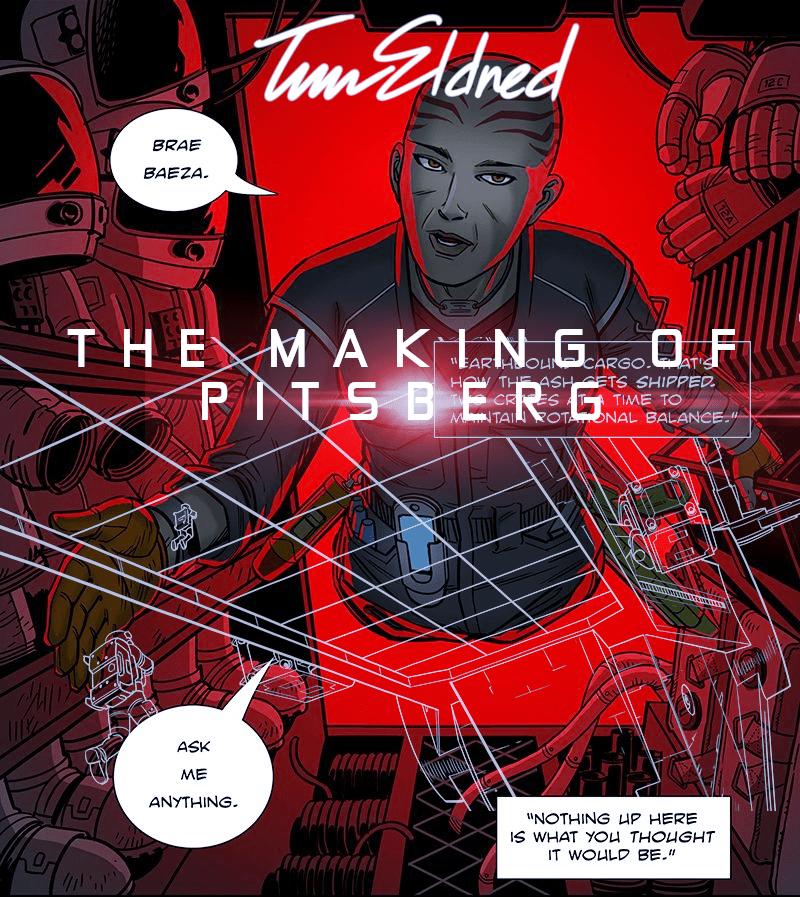
Tim Eldred: The Making Of PITSBERG
An exclusive look behind the scenes with artist and writer Tim Eldred at the making of Sci-Fi multimedia graphic novel PITSBERG!

Hello Tim, such a great opportunity to learn more about the creation of PITSBERG!
- What time do yo wake up and how do you start your day?
An hour of music on the classical station is what pulls me into consciousness between 7 and 8am. It used to be NPR, but more often than not the first voice I heard every morning was Trump and that just ruined everything. I always check my phone for emails and messages and early news before breakfast. Gotta get plugged into the world. - Any specific daily schedule?
Morning websurfing leads into my first work session of the day, which is always the work I get paid for. That continues up to lunch, when I break and watch two episodes of an anime show over food. Two episodes of something every day. (My unwatched anime pile is massive.) Then more of the work I get paid for (TV animation) until 4-ish when it’s time to walk the dogs. Finish up the work at 6 and then work out for an hour. Then dinner with another TV show and I spend the evening on personal projects. That’s an average day. On a weekend, all the work time is spent on personal projects.


- Do you need a particular environnement or music to be inspired ?
Inspiration comes from simply walking into my studio every morning and being surrounded by all the stuff I love. Books, music, DVDs, toys, models, etc. I listen to podcasts most of the time, but if work involves any level of writing I need it completely silent. - What about your workstation, your lab!
My workstation is split in half; analog side and digital side. The analog side consists of a drafting table and a light box. The digital side consists of my widescreen Mac and Cintiq. - What are the main steps of your creative process?
After a long gestation period that ends with chapter outlines, I’ll expand each outline into a full script. This is the best part, when the story ideas fully bake. I turn that into a thumbnail page by page. I scan the thumbnails and then it’s all digital. I build them up into pencils, then do all the lettering, then ink, then color and finish. I used to letter by hand, but it just got exhausting after a while. I found a font that looks pretty much like my hand lettering and redistributed that energy into drawing, where it belongs. A chapter of Pitsberg took 4 to 6 months to complete, then I rolled right into the next one. Couldn’t wait to get into the next script!
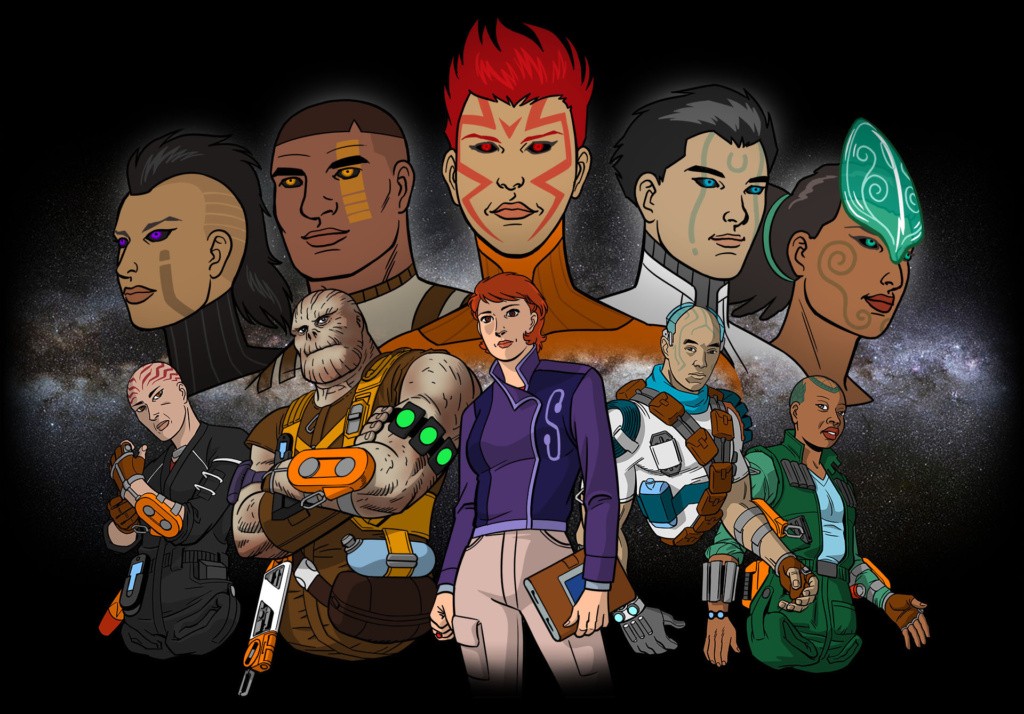

- Do you use a 3d assistance or photographic documentation?
On Pitsberg I was lucky enough to have a friend who could build 3D models of space ships and space stations for me. I used them as pencil drawings and inked over them so everything would still be hand-drawn in the end. Otherwise, since all the interiors were cluttered space stations I collected NASA photos of the ISS, space shuttle, etc. for hardware and drew it all over the place. Another experiment on this story was to actually cast the characters from real life. Once I decided who I would “hire” for the part, I got all the photo ref I could find and used that in lieu of penciling faces. It went a long way toward making them more recognizable, and breaking some of my bad drawing habits. - Your Secret Weapon?
That would have to be my work method; once a whole chapter is penciled, I choose one character or element at a time and ink just that from start to finish. Then I go back to the beginning and pick another. Then another. Then another. It’s a great way to track that one thing and make sure it’s consistent all the way through. I color the same way, and it makes everything go faster. - How do you light a scene?
It’s almost always practical. Where are they in the room, where’s the light source, should one character being throwing a shadow on another, etc. If I want dramatic lighting to make a point, I’ll stage it so the character is in the right spot to make that lighting happen. My day job is storyboarding for TV animation, so it comes as second nature. - How do you deal with daily loneliness of the webcomic artist?
I’ve never been lonely doing this. I feel like I’m communicating with a whole other world.


- What is the rule according to you for good dialogues?
After you’ve written something, say it out loud. If it doesn’t sound like something a person would actually say, rewrite it until it does. Also, pay really close attention to how you break up dialogue into word balloons. Moving from one balloon to the next gives you a natural pause that’s just as important as any of the words. People absorb information in a linear sequence, and this is the very definition of linear delivery. - How do you know that the page is finished?
When I can’t find anything else wrong with it. - What relationships do you have with your readers and fans?
I wish I had more to say about this. I absolutely hate promoting, so I do it as little as possible. Mostly it’s a SM post where I say, the latest chapter is coming, or it’s here. Then I go back into my den and continue working. I do occasionally find reviews later on, which is always nice. But I don’t run any campaigns or make merch, so there isn’t much interaction.
Your motivational mantra ?
“Okay, next I need to __.” Nothing more complex than that. Once I partner up with an idea, it becomes self-propelled until it’s done.
A warm thank you to Tim Eldred!
Connect with Tim Eldred on Twitter, Facebook, and Instagram
You can also visit greasemonkeybook.com and ourstarblazers.com
